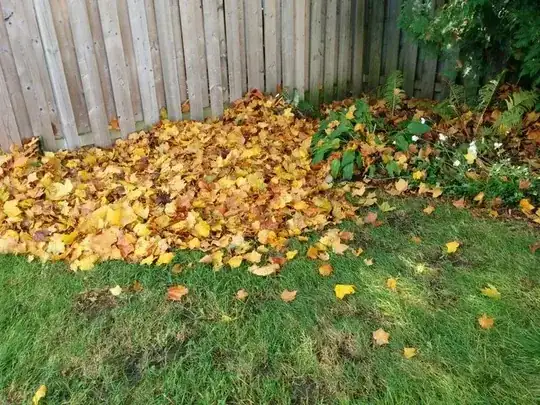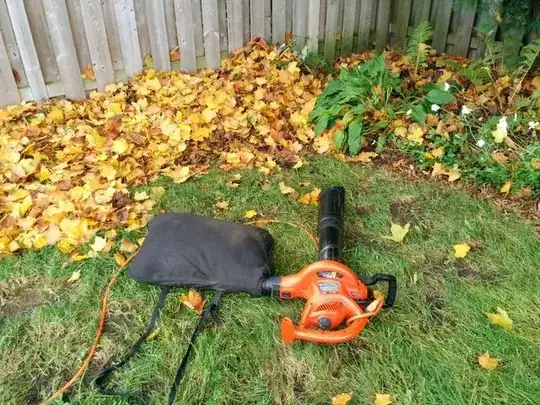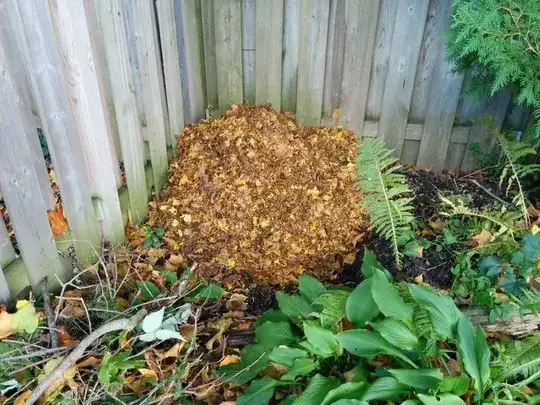Super question!! This stuff is wasted when people clean this up and bag it and send it to a place that will use this FREE brown compost to sell it back to you in the spring!
Do not put it in a pile next to your fence, or woody stems...for one thing, that pile is allowing moisture to stay right on that wood. There are decomposers everywhere all they need is moisture and will start right in on that fence. Anything that lived then dies, immediately starts decomposing especially with moisture. If you want your fence (dead wood) to last do not allow any organic matter, soil, moisture come in contact. You've got about a year or two left on your fence if you don't remove the mulch, soil, grasses, weeds that are definitely helping the bottom of your lovely fence rot. (I love that dove gray patina on wood) Get air beneath and around those fence boards! Check the siding of your home; 4" minimum between the soil and the bottom of your siding.
The dead leaves make a super mulch on your plant beds for the winter. It will keep the soil warmer to protect roots and by spring will be well on its way to being decomposed and feeding your soil's micro and macro flora and fauna critical for the health of your plants.
Oh, duh, the leaves also keep the surface of the soil shaded so that weed seeds are less able to germinate. Weeds are nothing more than a plant out of place and are called weeds because they are superior competitors. Germinating during winter is no problem!
Crisp lawn edges would pull the 'winter look' together. Great time to dig a little trench (6"X 6") between plant beds and lawn. This trench acts like a 'dry well' allowing a place for excess water to be absorbed into the soil without sitting too long around plant roots and also serves as the best way to define your lawn's edges. Use a smaller, flat edge shovel, throw the excess soil thinly on top of the leaves. Grab the chunks of lawn and remove. If you do this during the growing season you could bury the chunks so they are unable to grow and become more organic matter for your plant bed soil. But otherwise, just compost the sod elsewhere.
You've got a bit of work to do removing the soil from beneath your fence, thinly piling on your plant beds. Feel free to mix that bark mulch into the soil. Plant beds should always be like BEDS. Higher than the floor or lawn surface for sure. Got problems with grade or neighbors on the other side, send another question!
Keep any debris, soil, mulch OFF THE BOTTOM of woody trunks. This limits the height of your beds. Again, any moisture allowed on the woody trunks will cause bacteria to start decomposing your trees and shrubs as well as your fences...siding of your home.
Another thing to be aware is you might have shallow rooted plants that can not handle any more soil or mulch burying their roots deeper than they are right now. Examples would be Hydrangea, Azalea, Daphne. Piling on more soil/mulch could easily kill shallow rooted plants. If you have any of these plants make a circle as large as the canopy of the plant and do not dump any soil/mulch within that circle. A thin layer of leaves, however, is just fine for the winter. Just not up around the bottom of the trunks. Why buy compost when you've already got a great source!


